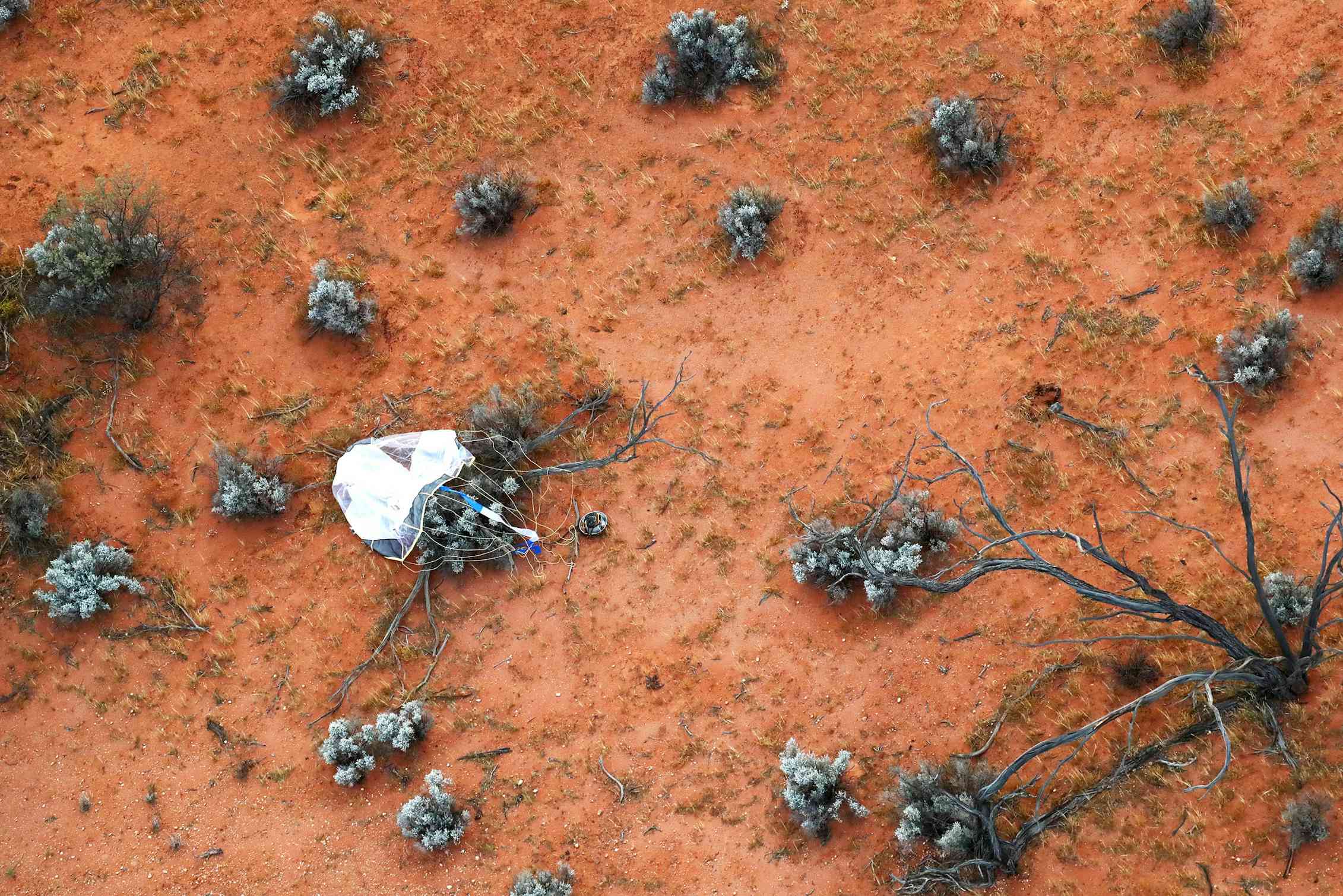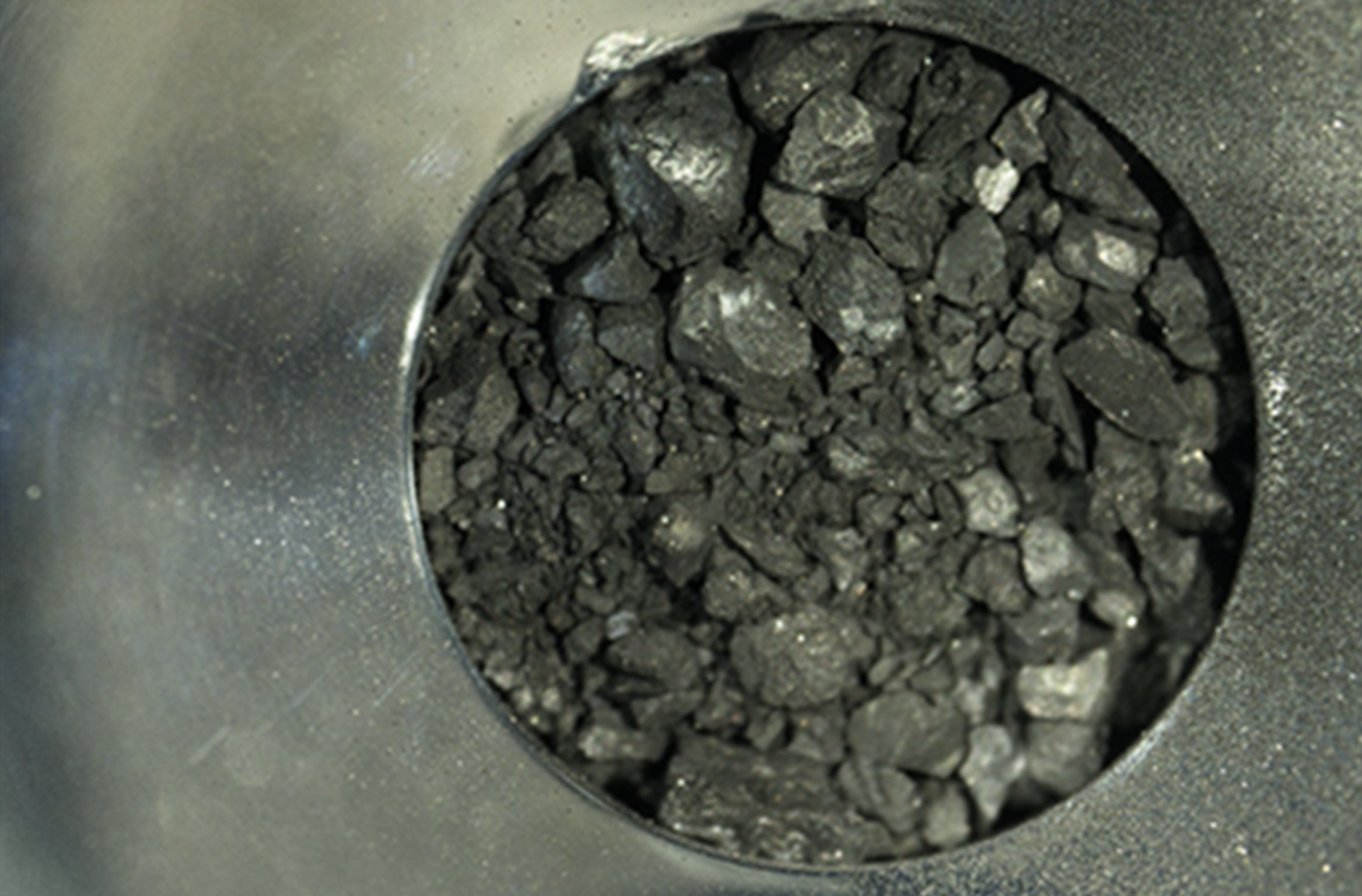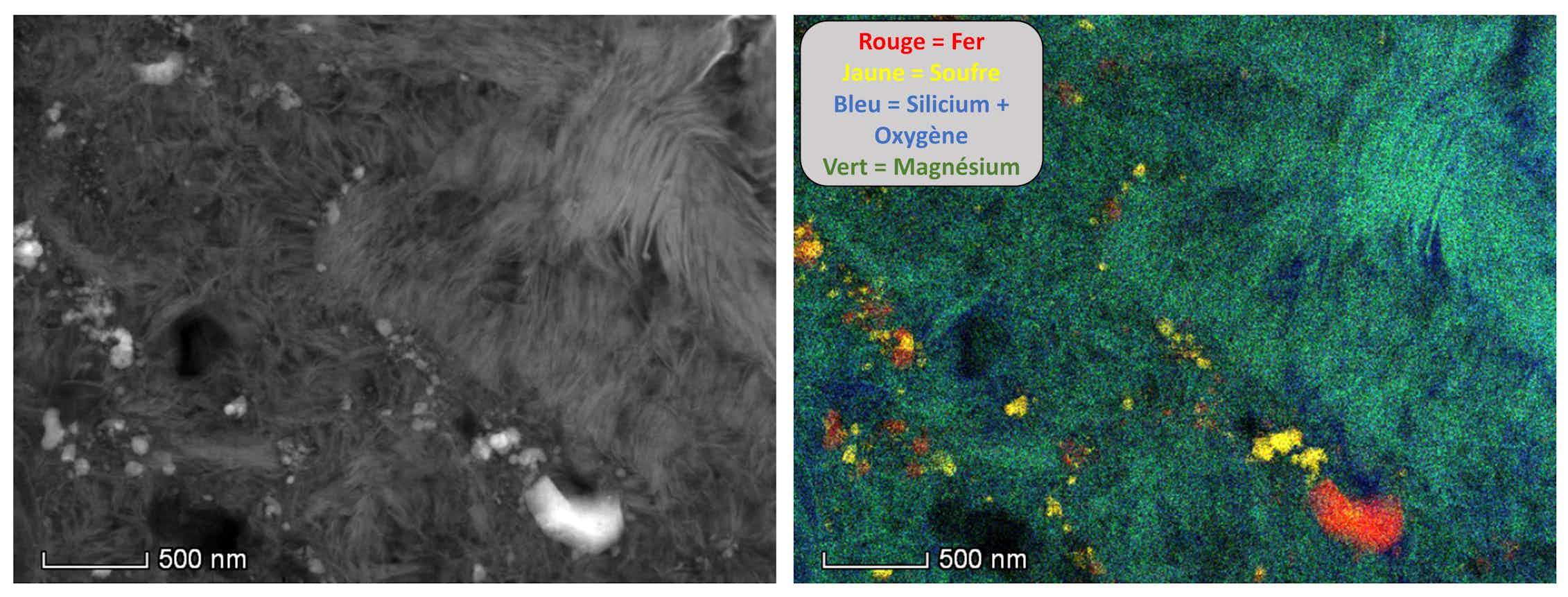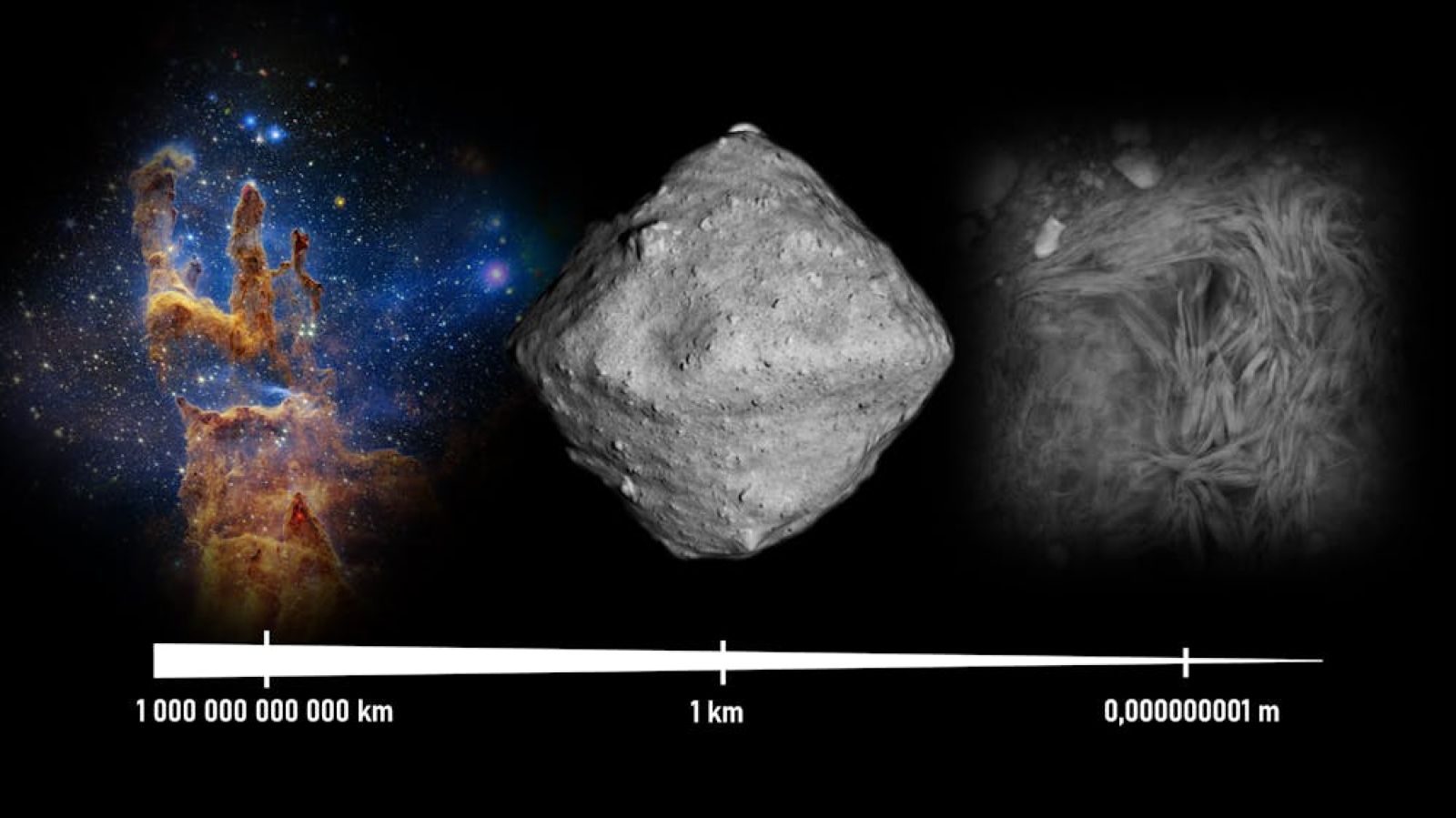🌊 Our oceans, a late extraterrestrial gift?
Published by Adrien,
Source: The Conversation under Creative Commons license
Other Languages: FR, DE, ES, PT
Source: The Conversation under Creative Commons license
Other Languages: FR, DE, ES, PT
Follow us on Google News (click on ☆)
The Hayabusa2 mission brought dust from the asteroid Ryugu back to Earth in 2020. These few grams of samples, shared among scientific teams worldwide, provide clues about the origin of water on our blue planet.

Among the planets in the solar system, Earth is the only one to feature vast expanses of liquid water on its surface. Covering nearly 70% of its surface, the oceans have enabled the emergence and development of life. But where could all this water have come from? And what were the processes that created the oceans?
Around 4.57 billion years ago, the Solar System was born from a rotating cloud of gas and dust around the young Sun. Over time, under the effect of gravity and multiple collisions, this material gradually agglomerated to form the planets... including Earth.
Several scenarios, which are not conflicting but complementary, have been proposed to explain the origin of water on what would later become the blue planet.
One suggests that water was present in the very matter within the protoplanetary disk that accreted to form our planet. In that case, water could have been trapped as tiny fluid inclusions in minerals, or present within the very structure of these minerals, relatively uniformly diluted.
Hayabusa2 maneuvering on the surface of the asteroid Ryugu. Due to the weak gravitational forces, the probe bounces immediately after contact with the asteroid. Source: SciNews and JAXA, University of Tokyo, Kochi University, Rikkyo University, Nagoya University, Chiba Institute of Technology, Meiji University, Aizu University, AIST.
Another hypothesis posits that the water arrived on Earth later, through impacts from water-rich comets or asteroids. Due to their relatively small size compared to planets, asteroids have not undergone high-temperature events that could have altered their chemistry. As a result, they have evolved very little since their formation, some 4.57 billion years ago.
Asteroids, markers of the genesis of the solar system
While terrestrial planets formed close to the Sun (between 0.4 and 1.5 astronomical units, an astronomical unit represents the Earth-Sun distance, approximately 93 million miles), asteroids are mainly found in regions further from the Sun, notably in the "main belt" (2 to 4.5 astronomical units).
These colder regions are conducive to the agglomeration of water ice and silicate dust, which give birth to asteroids. After their formation, some asteroids migrate within the solar system, reaching orbits closer to the Sun, similar to Earth's: these are near-Earth asteroids. Among them, the carbonaceous asteroid Ryugu (1 kilometer in diameter) was the subject of the Hayabusa2 space mission conducted by the Japan Aerospace Exploration Agency (JAXA) between 2014 and 2020.

The Hayabusa2 capsule lands in the Australian desert, carrying a few precious grams of asteroid dust.
JAXA, CC BY

Ryugu dust, visible to the naked eye in one of the Hayabusa2 capsules. The opening is 2 centimeters in diameter.
JAXA, Provided by the author
The probe first closely studied Ryugu, then collected samples in an impressive maneuver, before returning to Earth. Thus, on December 6, 2020, a few grams of dust (5.4 grams) from this asteroid landed in Australia aboard a capsule, and we were delighted to receive a small portion of this treasure at the University of Lille: just a few grains, barely visible to the naked eye, possibly holding answers to help us understand the formation of Earth's oceans.
Nanometer-scale observations using an electron microscope
Our research work consists of decrypting this extraterrestrial material down to the atomic scale, searching for the slightest clue! The instrument we use to probe this scale is a transmission electron microscope. It emits a beam of electrons that passes through the sample.
The signal collected, from the interaction between this material and the electron beam, gives us structural and chemical information about the mineralogical compositions that make it up. This technique allows us to observe details down to the nanometer scale—one billionth of a meter, which is equivalent to dividing a hair's thickness by 100,000.
Ryugu's "hidden" water
Studies of samples from the Ryugu asteroid reveal that they are relatively dry, meaning they contain very little H2O molecular water. However, these samples are predominantly composed of clays rich in magnesium and iron: they make up more than 70% of the asteroid's volume.
These clays are minerals with a microscopic structure consisting of layers (which can potentially accommodate water molecules), called "phyllosilicates." They contain abundant hydroxyl groups (-OH), which are integral components of their crystalline framework. These are made of oxygen and hydrogen, the same atoms that form water molecules.

Observation of a thin slice of a Ryugu grain using a transmission electron microscope (left) and chemical analysis of that region (right).
Phyllosilicates appear in green/blue and represent more than 70% of the total volume of Ryugu's samples.
Provided by the author
One reason for the presence of phyllosilicates in small asteroids dates back to the early Solar System. During its formation, around 4.57 billion years ago, dust and ice gradually agglomerated until they gave rise to planets, asteroids, and other celestial bodies (comets, etc.).
On small asteroids like Ryugu, dust made of anhydrous silicates (lacking water) coexisted with water ice. Soon after the asteroid's formation, it heated up due to the spontaneous decay of radioactive elements, causing the water ice to melt. This led to an episode of "aqueous alteration," where the water interacted with the surrounding silicates to form the phyllosilicates we observe today in Ryugu.
During Earth's formation, and shortly afterward, massive impacts from asteroids similar to Ryugu could have delivered substantial quantities of phyllosilicates. Following high-temperature events on Earth, hydroxyl groups (-OH) would have been released from the clay's mineral structure to form water molecules:
The intense asteroid bombardments Earth experienced in its early years could thus have significantly contributed to the gradual formation of the oceans.

Our research, where the infinitely large meets the infinitely small (billionth of a meter), glimpses the role these carbonaceous asteroids played in the appearance of Earth's oceans and the development of life. Molecular clouds, represented here by the "pillars of creation" (left), are regions where stars and their stellar systems are born.
NASA (JWST); JAXA; Provided by the author
Water... but not just that!
The Ryugu asteroid is composed of more than 70% phyllosilicates, but it also contains a few percent of organic matter (around 5 to 7% by mass).
This matter, composed of carbon, hydrogen, oxygen, and nitrogen, contains molecules essential for the development of life on Earth: amino acids. These short molecules are the basic building blocks involved in protein structure. Although present in small proportions in Ryugu, the presence of amino acids suggests that carbonaceous asteroids may have provided the necessary ingredients for the development of life on Earth about 3.8 billion years ago.